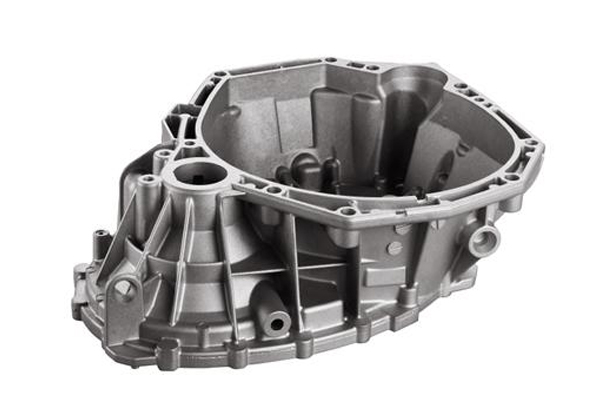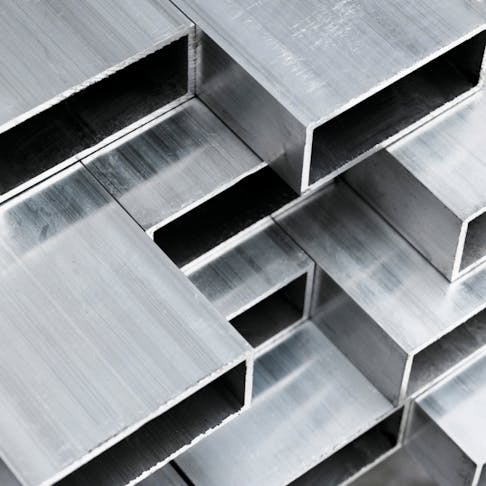The role of Aluminum Casting in green technology
Every little thing You Required to Understand About the Uses and Perks of Aluminum Castings
Aluminum castings play an essential function throughout numerous markets, providing one-of-a-kind buildings that boost item efficiency. Their light-weight nature and strength make them perfect for applications in auto and aerospace markets. In addition, the versatility of casting approaches permits complex styles and limited tolerances. As the demand for lasting services rises, recognizing the benefits and applications of aluminum castings becomes progressively crucial. What certain benefits do they supply over various other materials?
Review of Aluminum Casting Processes
Aluminum casting procedures encompass a selection of strategies made use of to shape molten aluminum right into desired types. These methods include sand casting, die casting, and financial investment casting, each offering unique advantages relying on the application (Aluminum Casting). Sand casting includes creating a mold from sand, permitting for intricate designs and big elements, while die spreading utilizes high stress to infuse liquified aluminum right into metal molds, ensuring precision and smooth finishes. Financial investment spreading, likewise called lost-wax casting, produces complex forms with superb dimensional accuracy, making it suitable for in-depth parts
These procedures are characterized by their capacity to create light-weight, sturdy components that show exceptional rust resistance. The versatility of aluminum enables customization in different markets, from vehicle to aerospace. Furthermore, the ability to recycle aluminum boosts the sustainability of these casting procedures, minimizing environmental impact while maintaining material stability. Recognizing these techniques is essential for enhancing production effectiveness and attaining top notch aluminum castings.
Secret Applications of Aluminum Castings
Aluminum castings play a necessary function throughout different markets, specifically in vehicle, aerospace, and consumer electronics. In the automobile market, they add to light-weight frameworks that improve fuel performance. Likewise, aerospace components benefit from aluminum's strength-to-weight proportion, while customer electronics take advantage of its adaptability for efficient manufacturing.
Automotive Market Applications
As the auto sector remains to evolve, manufacturers increasingly depend on aluminum castings for their light-weight yet sturdy residential or commercial properties. These castings play an essential duty in boosting automobile performance, gas efficiency, and total security. Trick applications consist of engine blocks, transmission housings, and architectural parts, which gain from aluminum's exceptional strength-to-weight proportion. In addition, aluminum castings assist in complicated geometries, enabling cutting-edge styles that enhance aerodynamics and decrease drag. The rust resistance of aluminum likewise adds to long life, minimizing upkeep prices for both suppliers and consumers. As electrical lorries gain appeal, aluminum castings are necessary for battery rooms and various other components, additionally solidifying their importance in the future of automotive production.
Aerospace Element Manufacturing
In the aerospace field, aluminum castings are indispensable to the manufacturing of light-weight, high-performance parts. These castings are vital for manufacturing parts such as engine real estates, architectural frameworks, and touchdown equipment parts, where weight reduction is essential for fuel effectiveness and overall performance. The outstanding strength-to-weight ratio of aluminum enables for the growth of complicated geometries that enhance the rules of aerodynamics. In addition, aluminum's resistance to corrosion contributes to the long life and integrity of aerospace parts, ensuring safety and security in flight procedures. The spreading process additionally permits specific resistances, which is important in conference stringent aerospace sector requirements. In general, aluminum castings play an essential role ahead of time aerospace innovation while sustaining the sector's promote sustainable practices.
Consumer Electronic Devices Manufacturing
The use of aluminum castings in consumer electronics manufacturing has come to be significantly considerable because of their light-weight and sturdy residential properties. Suppliers take advantage of these castings to develop components for various tools, including smart devices, laptop computers, and gaming consoles. Aluminum's exceptional thermal conductivity additionally helps in warmth dissipation, enhancing device performance and durability. Furthermore, the flexibility of aluminum permits detailed designs and complicated geometries, allowing smooth and modern-day aesthetic appeals that appeal to consumers. Additionally, aluminum castings can be easily reused, lining up with the growing need for sustainable manufacturing methods. As technology advances, the role of aluminum castings in creating innovative and effective consumer electronic devices is expected to increase, making them a staple in the sector.

Benefits of Making Use Of Aluminum Castings
While different materials are offered for spreading, aluminum stands apart due to its distinct mix of light-weight buildings, stamina, and corrosion resistance. The low thickness of aluminum makes it an optimal option for applications where weight reduction is critical, such as in the automobile and aerospace markets. Its excellent strength-to-weight proportion enables producers to create long lasting elements without adding excessive weight.
Furthermore, aluminum castings can be produced with intricate styles and tight resistances, enabling intricate geometries that are difficult to attain with other materials. The convenience of aluminum enables various casting techniques, consisting of sand, pass away, and investment spreading, satisfying varied manufacturing needs. Moreover, aluminum's ease of machining and finishing enhances its charm, facilitating the production of premium surface finishes. On the whole, the benefits of utilizing aluminum castings contribute to enhanced performance and efficiency in numerous applications throughout different sectors.
Deterioration Resistance in Aluminum Castings

All-natural Oxide Layer
A natural oxide layer types on the surface of aluminum castings, providing a necessary obstacle against environmental variables that can lead to deterioration. This slim, safety film is a result of the aluminum's response with oxygen airborne, efficiently shielding the underlying steel from moisture, chemicals, and contaminants. Because of this, aluminum castings show impressive corrosion resistance, which enhances their longevity and toughness in numerous applications. The oxide layer is not only advantageous for defense yet also adds to aesthetic high qualities, as it can establish a matte finish that several markets find attractive. Furthermore, this natural process minimizes the demand for additional finishings, making aluminum castings a cost-effective option for makers seeking reputable, lasting products.
Alloy Variants Impact
The composition of aluminum alloys greatly affects their corrosion resistance residential properties in castings. Various alloy variants, such as 1xxx, 2xxx, and 6xxx collection, show distinctive degrees of susceptibility to corrosion. 1xxx alloys, primarily made up of pure aluminum, offer outstanding rust resistance due to their high pureness. In contrast, 2xxx alloys, which contain copper, may experience considerable rust when revealed to harsh environments. 6xxx alloys, including magnesium and silicon, strike a balance in between stamina and resistance. The presence of alloying elements can boost or lessen safety oxide layers, eventually affecting longevity and efficiency. Recognizing these variants is vital for selecting the best alloy for details applications where deterioration resistance is vital.
Layout Adaptability and Customization
Different products exist for casting applications, aluminum stands out due to its exceptional layout flexibility and possibility for modification. This versatility enables designers and designers to create complex forms and types that fulfill certain useful requirements. Aluminum Casting. The low thickness of aluminum enables lightweight designs, which is specifically beneficial in markets such as automobile and aerospace, where weight decrease is vital
Aluminum castings can be customized to numerous specs, including wall surface thickness, surface area finish, and dimensional resistances. This adaptability not just improves the visual allure but likewise enhances the performance of the final product. Additionally, advanced strategies such as 3D printing and computer-aided design (CAD) further assist in the customization process, making it possible for fast prototyping and decreasing preparations. Subsequently, aluminum castings can efficiently fulfill the diverse demands of different industries while using manufacturers the capacity to innovate and respond promptly to market demands.
Contrast With Other Casting Products
While numerous casting products each have their distinct advantages, aluminum constantly demonstrates remarkable homes that make it a recommended selection in lots of applications. Contrasted to iron and steel, aluminum is significantly lighter, which lowers the general weight of ended up items, enhancing fuel performance in automotive and aerospace industries. Moreover, aluminum provides superb deterioration resistance, calling for less upkeep with time contrasted to materials like iron, which can corrosion.
When juxtaposed with plastics, aluminum's toughness and internet sturdiness go beyond numerous artificial choices, making it suitable for demanding settings. Furthermore, aluminum's thermal and electric conductivity is remarkably greater than many various other steels, making it excellent for applications calling for effective warmth dissipation or electrical components.

Future Trends in Aluminum Casting Modern Technology
Innovations in aluminum spreading technology are set to redefine its applications across different markets. Technologies in automation and robotics are streamlining production processes, enhancing efficiency and precision. The combination of expert system and maker understanding enables real-time tracking and anticipating upkeep, minimizing downtime and boosting top quality control.
The advancement of advanced alloys is increasing the efficiency capabilities of aluminum castings, making them appropriate for even more requiring applications, particularly in auto and aerospace markets. Sustainable practices are additionally gaining grip, with raised focus on recycling aluminum and lowering carbon footprints during manufacturing.
Additive manufacturing strategies, such as 3D printing, are being discovered to develop complicated geometries that conventional techniques can not achieve, permitting greater design versatility. These patterns show a future where aluminum casting will not just satisfy but surpass market expectations, driving development and sustainability in production.
Often Asked Concerns
How Are Aluminum Castings Recycled After Usage?
Aluminum castings are commonly gathered, cleansed, and processed in reusing centers. The material is melted down, improved, and after that reformed into brand-new items, therefore preserving resources and reducing ecological impact while maintaining aluminum's preferable homes.
What Are the Typical Prices Connected With Aluminum Castings?
The regular costs associated with aluminum castings vary based upon factors such as complexity, volume, and product specifications. Normally, rates range from a few bucks per pound to considerably greater quantities for intricate layouts and large quantities.
Just How Do Aluminum Castings Compare in Weight to Steel Castings?
Aluminum castings consider substantially less than steel castings, commonly around one-third the weight (Aluminum Casting). This decreased mass enables simpler handling, transportation, and application in different markets, adding to improved performance in style and production processes
What Industries Mostly Rely on Aluminum Castings?
Numerous industries greatly rely upon aluminum castings, consisting of automobile, aerospace, electronic devices, and durable goods. Their light-weight nature, deterioration resistance, and adaptability make them necessary for producing parts in these sectors, improving performance and efficiency.
Are There Any Wellness Dangers Linked With Aluminum Casting Processes?
Health and wellness dangers related to aluminum spreading processes consist of exposure to fumes, dust, and chemicals, which can cause respiratory issues and skin irritation. Appropriate precaution and devices are vital to reduce these prospective risks in the work environment.